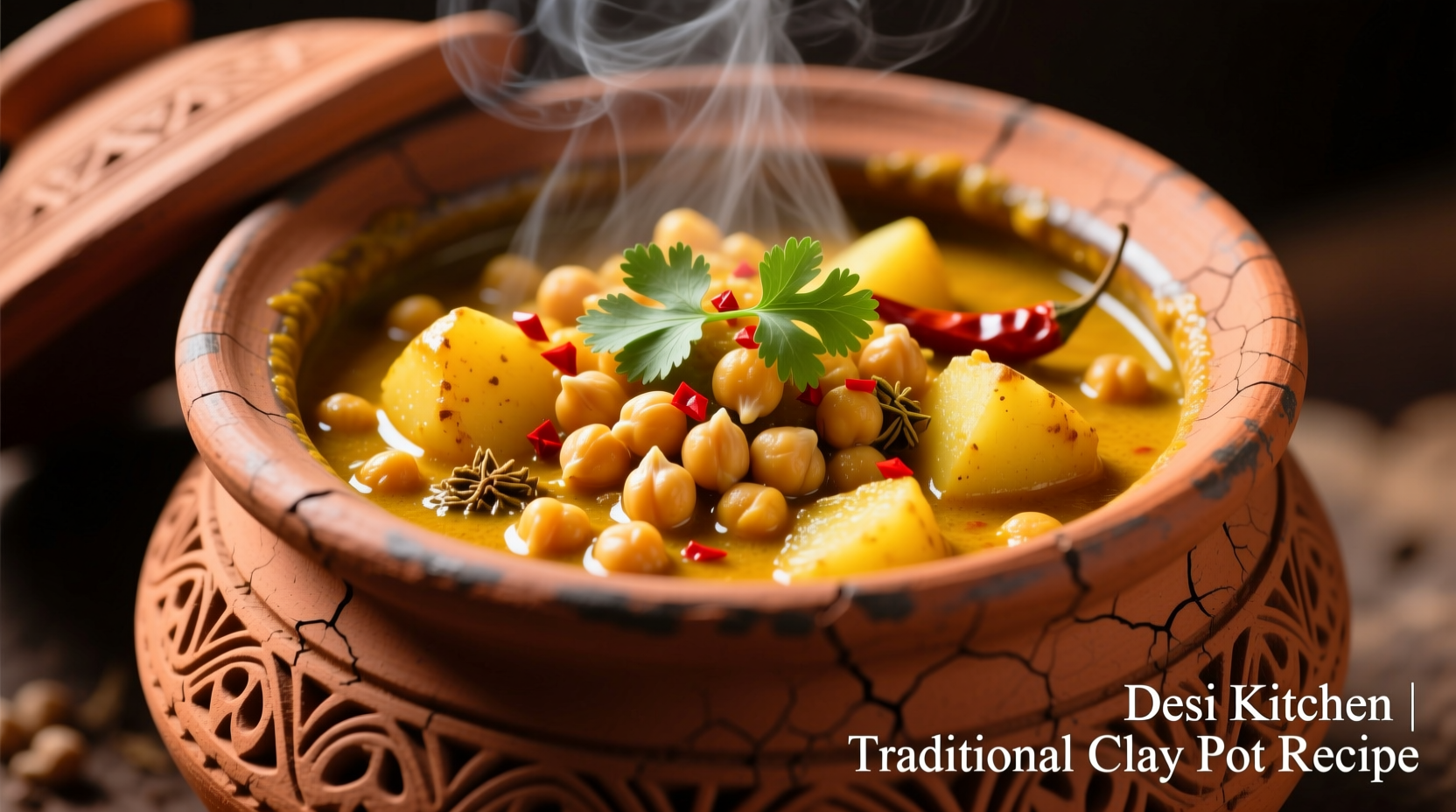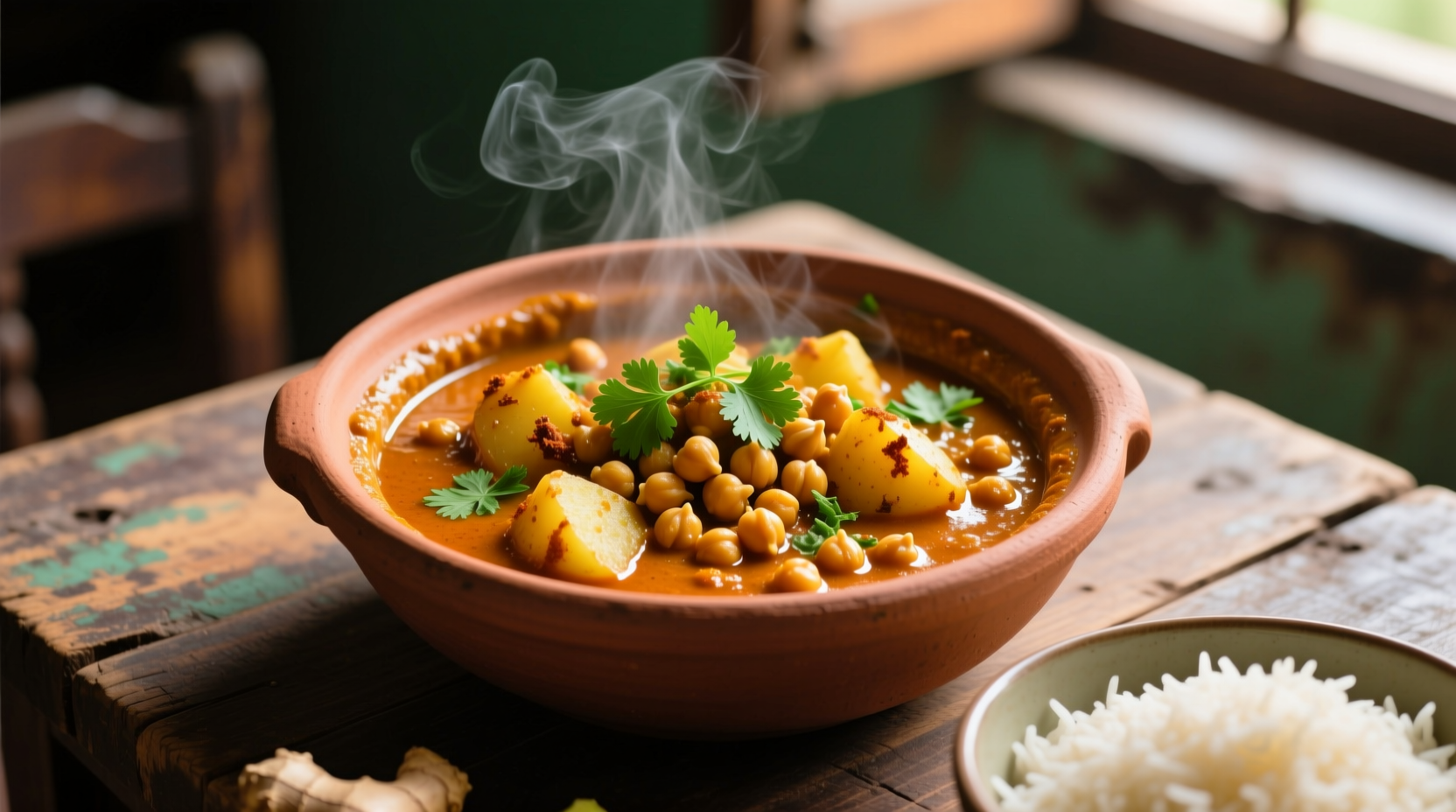Why This Chickpea Potato Curry Recipe Works Every Time
Chickpea potato curry (known as Chana Aloo in North India) has sustained families across the Indian subcontinent for generations. Unlike many simplified Western adaptations, this version captures the authentic flavor layers through proper spice blooming techniques and ingredient sequencing that home cooks often overlook.
Professional chefs understand that chickpea potato curry isn't just about throwing ingredients together - it's about timing spice introduction to maximize flavor extraction. Most amateur recipes fail by adding all spices at once, creating a one-dimensional taste rather than the complex profile that defines authentic Indian curries.
Essential Ingredients Checklist
What separates an ordinary chickpea potato curry from an extraordinary one comes down to three critical elements: spice quality, ingredient preparation, and cooking sequence. Here's exactly what you need:
| Core Ingredients | Why It Matters | Smart Substitutions |
|---|---|---|
| 1.5 cups cooked chickpeas (or 1 can, drained) | Freshly cooked have superior texture | Cannellini beans in emergency |
| 2 medium Yukon Gold potatoes, ¾" cubes | Waxy potatoes hold shape better | Red potatoes (avoid russets) |
| 1.5 tsp cumin seeds | Must be fresh for proper blooming | ½ tsp ground cumin (less ideal) |
| 2 tbsp mustard oil (or vegetable oil) | Traditional oil enhances flavor depth | Coconut oil for milder taste |
The Evolution of Chickpea Curries in Indian Cuisine
Chickpeas have been central to Indian cooking since the Mughal era (1526-1857), but chickpea potato curry specifically emerged during British colonial rule when potatoes were introduced to the subcontinent. This adaptation demonstrates how Indian cuisine creatively incorporated new ingredients while maintaining traditional spice principles.
| Historical Period | Key Developments | Modern Relevance |
|---|---|---|
| Mughal Era (1526-1857) | Chickpeas used in chana masala with minimal spices | Foundation of chickpea curry traditions |
| British Colonial (1858-1947) | Potatoes incorporated creating Chana Aloo | Origin of today's chickpea potato curry |
| Post-Independence (1947-Present) | Regional variations developed across India | Northern style features tomatoes, Southern uses coconut |
Step-by-Step Cooking Process: The Professional Method
Follow this sequence to achieve restaurant-quality results. The critical difference from most recipes is the staged spice introduction that builds flavor complexity:
- Bloom cumin seeds in hot oil for 30 seconds until fragrant but not burnt
- Add onions and cook until golden (12-15 minutes) - this caramelization creates flavor foundation
- Introduce ginger-garlic paste and cook 2 minutes until raw smell disappears
- Add tomatoes and cook down to thick paste (8-10 minutes) - crucial step many skip
- Layer dry spices (turmeric, coriander, cumin powder) and cook 1 minute to remove raw taste
- Add potatoes and ½ cup water, cover and simmer 10 minutes
- Add chickpeas and cook 8-10 minutes until potatoes are tender but intact
- Finish with garam masala and fresh cilantro

When This Recipe Works Best (And Limitations)
Understanding the context boundaries of this chickpea potato curry recipe ensures success:
- Ideal for: Weeknight dinners, meal prep (tastes better next day), vegetarian/vegan diets, budget-friendly cooking
- Not ideal for: Impromptu company (requires 40 minutes), extremely time-pressed situations, those avoiding nightshades (contains tomatoes)
- Texture warning: Potatoes will soften further when reheated - cook them slightly firm if planning leftovers
- Spice adjustment tip: Add chili gradually - you can always increase heat but can't remove it once added
Serving & Storage Guide
For authentic presentation, serve chickpea potato curry with:
- Steamed basmati rice (soak 30 minutes before cooking for perfect grains)
- Fresh cilantro and lemon wedges on the side
- Plain yogurt to balance the spices
Storage instructions: Cool completely before storing in airtight containers. Keeps refrigerated for 4 days or frozen for 3 months. When reheating, add 1-2 tablespoons water to restore moisture as the curry thickens when chilled.
Flavor Variations Worth Trying
Once you've mastered the basic chickpea potato curry recipe, experiment with these authentic regional adaptations:
- Punjabi style: Add 2 tbsp fresh cream at the end for richer texture
- South Indian version: Replace tomatoes with ½ cup coconut milk and add curry leaves
- Restaurant-style: Finish with 1 tsp kasuri methi (dried fenugreek leaves)
- Protein boost: Add ½ cup cooked spinach during the last 5 minutes
Frequently Asked Questions
Here are answers to the most common questions about making perfect chickpea potato curry:











 浙公网安备
33010002000092号
浙公网安备
33010002000092号 浙B2-20120091-4
浙B2-20120091-4